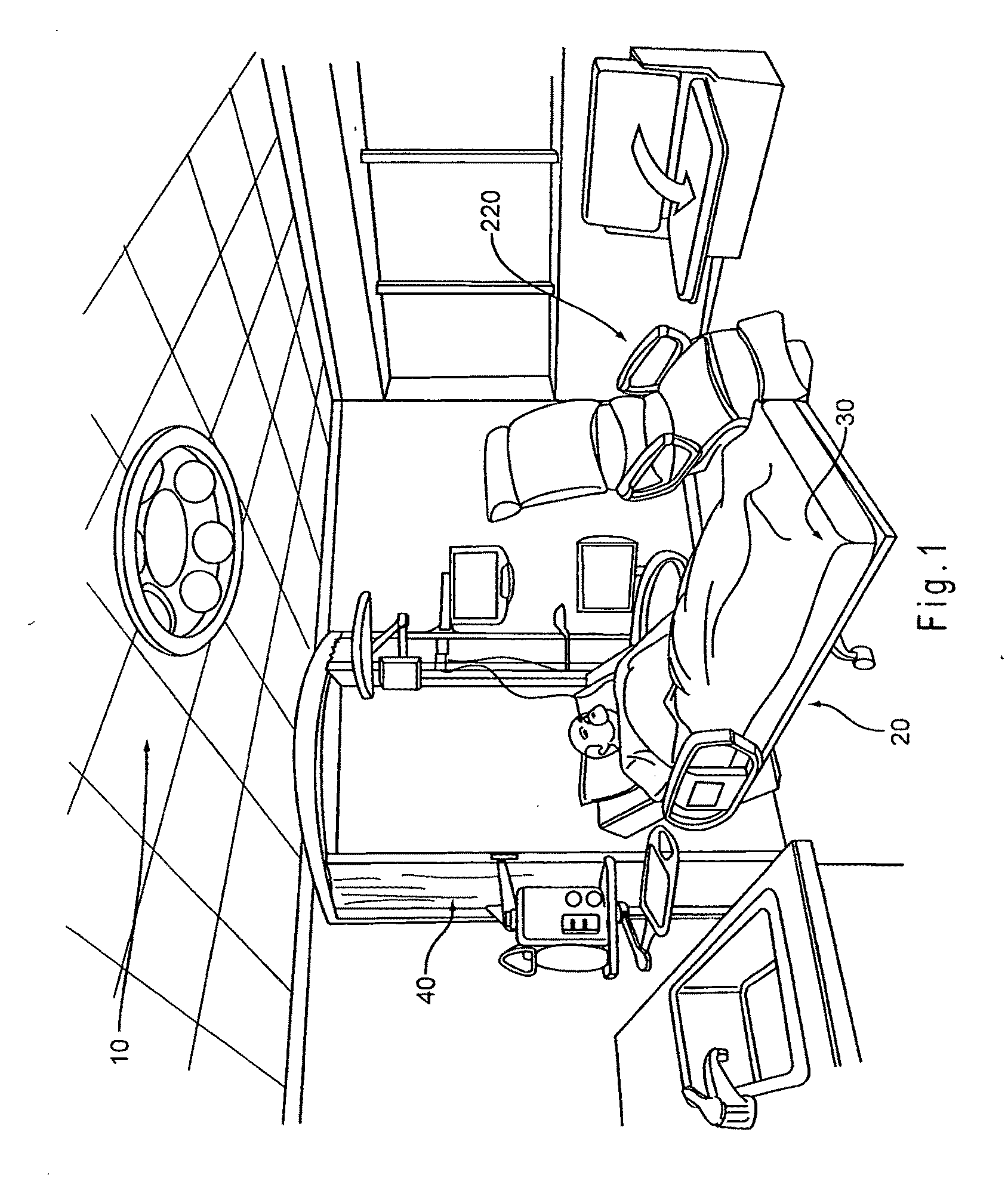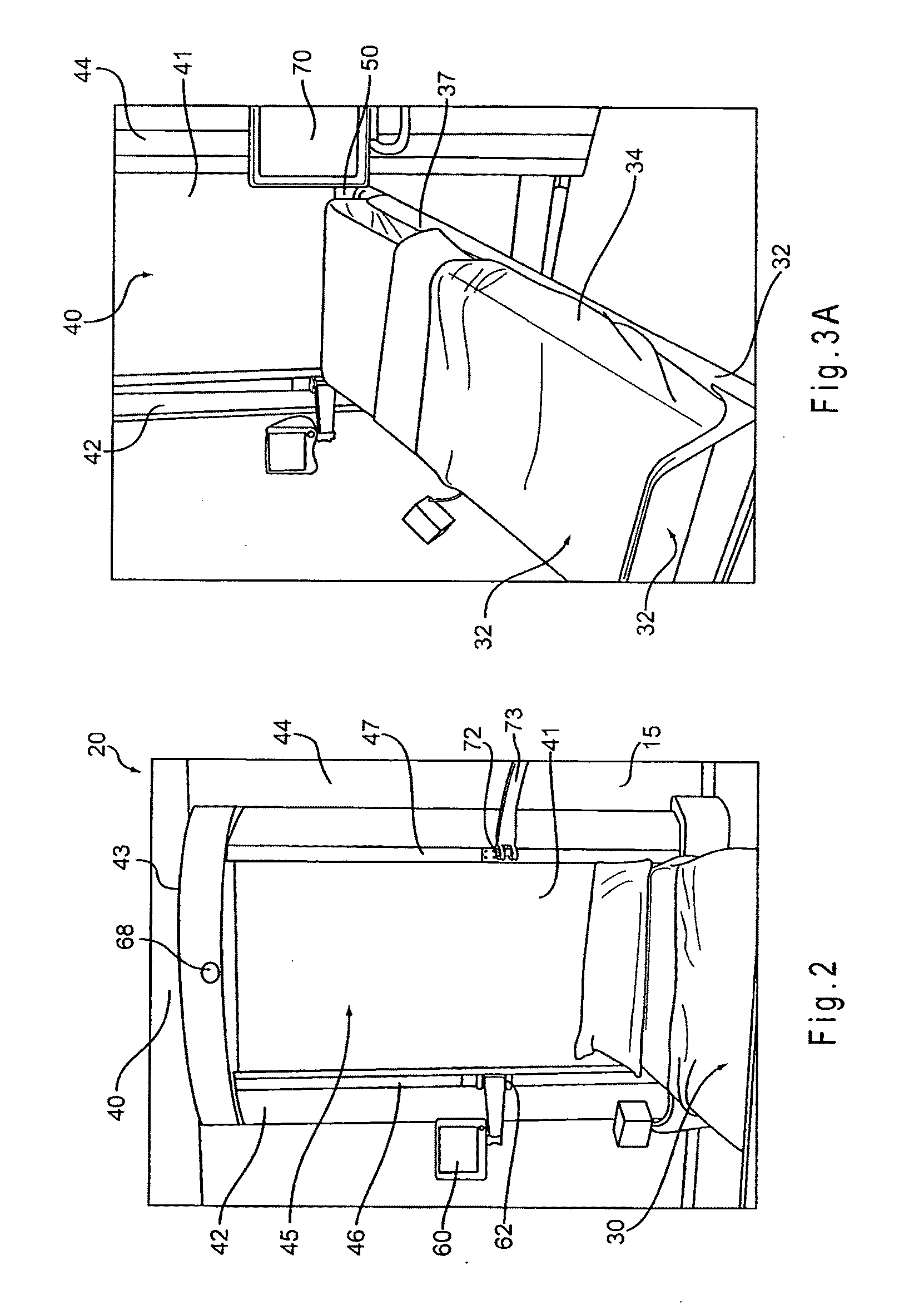Integrated patient room
a patient room and integrated technology, applied in the field of integrated patient rooms, can solve the problems of inability to achieve such a range of positions in most adjustable beds, poor comfort of patients, and inability to further adjust beds within these positions, so as to improve safety, satisfaction and/or outcomes.
- Summary
- Abstract
- Description
- Claims
- Application Information
AI Technical Summary
Benefits of technology
Problems solved by technology
Method used
Image
Examples
Embodiment Construction
[0121]The present embodiments relate generally to an integrated patient room having multiple features designed to enhance the safety, satisfaction, and / or outcomes for a patient and / or caregiver. Different sections below are used to describe various features and components of the integrated patient room.
Integrated Patient Room in General
[0122]The integrated patient room may be configured for acute care and recovery of individual patients, and may also comprise various features useful for other occupants, such as a caregiver or family member. Further, the integrated patient room may facilitate tasking and other operations needed for and by nurses, doctors and other employees of the hospital.
[0123]In general, the integrated patient room comprises one or more programmable devices, such as a bed assembly or chair that employs actuation mechanisms to facilitate patient movement, mobilization, positioning and transfer. The devices may assume a wide range of positions and may be pre-progra...
PUM
 Login to View More
Login to View More Abstract
Description
Claims
Application Information
 Login to View More
Login to View More - R&D
- Intellectual Property
- Life Sciences
- Materials
- Tech Scout
- Unparalleled Data Quality
- Higher Quality Content
- 60% Fewer Hallucinations
Browse by: Latest US Patents, China's latest patents, Technical Efficacy Thesaurus, Application Domain, Technology Topic, Popular Technical Reports.
© 2025 PatSnap. All rights reserved.Legal|Privacy policy|Modern Slavery Act Transparency Statement|Sitemap|About US| Contact US: help@patsnap.com



